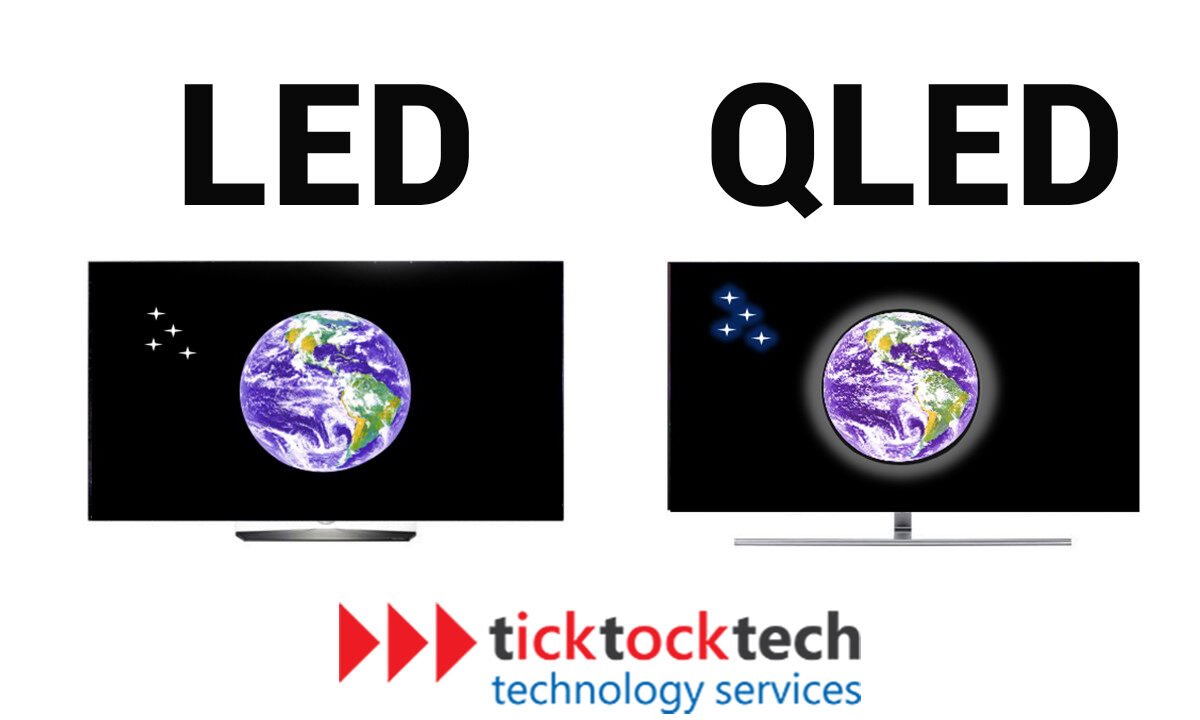Since the introduction of LCD technology in the 90s, which nearly drove the CRT industry out of business, television displays have been constantly advancing. LEDs appeared just as the world was beginning to understand LCD technology, changing the course of history. Initially, it was LCD, then LED, and today we have more sophisticated and high-definition QLED televisions that exceed anything we can imagine. LED is similar to LCD in appearance, but it employs an LED backlight rather than the normal cold cathode fluorescent lamps found in most LCD televisions. QLED, on the other hand, is a completely different story – it’s the game changer of television displays that emit light via Quantum Dot electroluminescence.
What is LED?
Light Emitting Diode (LED) is a small, effective light source that emits light whenever an electric current passes through it. They are distinct from the traditional CCFL-backlit LCD TVs in every way. LED TVs create images with better dynamic contrast than LCD TVs and can be incredibly thin. LED televisions operate on the same principles as the first LCD televisions. It is essentially a flat panel with various layers which control color and light. The lowermost layer is typically the backlight unit, which illuminates the screen so that the image can be seen. LED has grown in popularity in recent years due to its low power consumption, low cost, and ability to produce bright picture quality.
What is QLED?
QLED TVs are built on the same principles as LED TVs, with a backlight, a liquid crystal covering, a color layer, and a screen. QLED TVs, on the other hand, do not have a white LED backlight. This is because most white LED backlights do not have perfect whites. When looking at LED light strips, you will observe that they typically have a color tinge. To address this issue, Samsung, one of the largest QLED TV manufacturers, used a blue backlight and then sandwiched a quantum dot layer between both the backlight and the LCD layer. A part of the blue light reflected by the LED backlight was converted to red and green by the quantum dot layer.
Differences between LED and QLED
1. Black Level and Contrast
The ability to generate deeper blacks enables televisions to achieve a higher contrast ratio, resulting in better image quality. LEDs use unique RGB-coloured lights to generate richer and sharper colors with higher dynamic contrast, as well as a much broader and wider color and higher light levels. QLEDs, on the contrary, have a high contrast ratio with authentic blacks and bright whites. QLED TVs can run far brighter than other display technologies available on the market because each pixel emits its light.
2. Brightness
LED TVs are luminous because they can get extremely bright and attain maximum brightness without consuming too much power. The only issue with maximum brightness is power usage. This is because TVs tend to reduce brightness levels to save power whilst still maintaining optimal electricity draw. This LED reduces electricity consumption without sacrificing brightness. On the other hand, QLED uses a completely different technology and cannot achieve excellent brightness without using too much power.
3. Colour
QLED is unquestionably better, as it is one of the biggest features it possesses. The new QLED TVs have 100 percent color capacity and unrivaled saturation levels thanks to quantum dot technology. In terms of image quality, QLED clearly outperforms its LED counterpart. The increased color volume yields nearly perfect image quality with more authentic, accurate, and lively images. LEDs are also not bad either, but they simply cannot compete with QLEDs.
3. Viewing Angles
While both LEDs and QLEDs provide a good viewing experience when you’re directly seated in front of the TV, neither is perfect for viewing when you’re sitting at an angle. When you move to a wide angle, the picture quality degrades significantly due to a murky effect, resulting in a poor off-angle visual experience. Because LEDs are used to backlight an LCD panel, the viewing angle is directly affected. This results in reduced color accuracy, loss of contrast, and brightness alteration.
Conclusion – Differences between LED and QLED
In actuality, LEDs and QLEDs have the same type of technology. Both pixels do not produce their own light, so they need a backlight. This is why black scenes from movies appear grey because some of the light from the backlight still bleeds through. The major difference between the LED and QLED televisions is that QLED TVs have quantum dot films inside them, which between the backlight and LCD layer allows the TV to produce more colors with higher brightness. That being said, QLED TVs are a form of improvement on the LED TVs.

